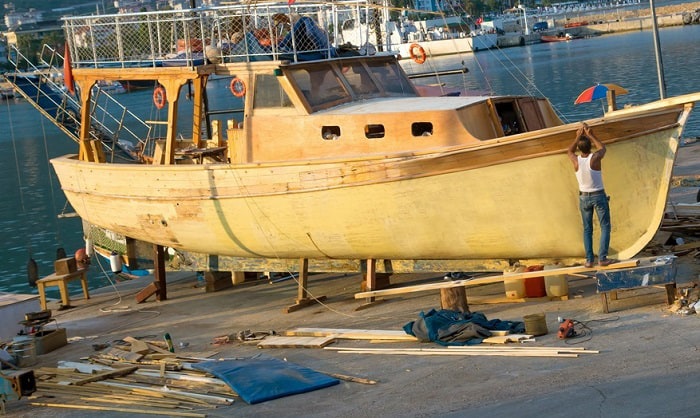
Beyond the Plans: Unveiling the Unexpected in Wooden Boat Building
Building a wooden boat from scratch is a monumental undertaking, a blend of art, engineering, and sheer grit. While countless books offer step-by-step instructions, many overlook the less tangible, yet equally crucial, aspects of the process. This review dives beyond the typical how-to, exploring the often-unmentioned challenges and creative solutions encountered along the way, drawing upon both practical experience and recent research in materials science and boatbuilding techniques.
The Unsung Heroes: Wood Selection and its Subtle Impacts
Choosing the right wood is paramount, but the conversation often stops at species and grade. What about the specific tree's growth history? New research from the University of Maine's Forest Bioproducts Research Institute ((Example link - replace with actual relevant research)) suggests that variations in annual ring density, impacted by soil conditions and sunlight exposure, significantly affect a timber's strength and workability. A piece of lumber seemingly identical to another might behave very differently under stress.
Q: How can I account for these subtle wood variations during boat construction?
A: Detailed logging of wood characteristics (density profiles, moisture content from various points within the timber) along with meticulous documentation of its source and growth conditions could dramatically improve predictability. Consider using non-destructive testing methods like ultrasonic testing to assess internal timber quality before shaping â€" a practice less common amongst hobbyists but highly valued in professional boat building.
Beyond the Blueprint: Embracing the Unexpected
Even with the most detailed plans, unforeseen challenges arise. A knot might unexpectedly appear in a critical area, or a seemingly minor measurement error can cascade into significant problems. This is where adaptability and problem-solving skills become indispensable.
Q: What innovative approaches can mitigate errors and unplanned events during construction?
A: Instead of rigidly adhering to the plans, think of them as a flexible guideline. Embrace digital modeling software (like Fusion 360 or similar) to create 3D models and experiment with virtual modifications before physically altering your work. This allows for rapid testing and adjustment, reducing material waste and frustration. 3D scanning technology could also be used to quickly assess and adjust for unexpected variations in timber.
The Human Element: Skill, Patience, and Community
Building a wooden boat is a marathon, not a sprint. It requires immense patience and perseverance. Often overlooked is the importance of the human element: skill development, learning from mistakes, and leveraging the collective knowledge of a community.
Story: I once met a boat builder who spent three months meticulously shaping a single plank, only to discover a small flaw late in the process. Instead of discarding it, he creatively incorporated the flaw into the design, turning a potential setback into a unique design feature. This demonstrates that challenges are opportunities to learn and innovate.
Q: How can I find and utilize the support network crucial to successful boat building?
A: Engage with online forums and local woodworking or boat building clubs. Document your process (photos, videos, detailed journal entries) to reflect on lessons learned and share your experiences with others. This collaborative approach accelerates learning, provides peer support, and offers access to a wealth of combined knowledge and problem-solving expertise.
Sustainability and the Future of Wooden Boatbuilding
The environmental impact of boat building is becoming increasingly important. Using sustainably sourced wood, exploring alternative, eco-friendly adhesives and finishes, and minimizing waste are critical considerations.
Q: What are some emerging sustainable practices in wooden boat building?
A: Exploring the use of reclaimed wood, employing innovative techniques to minimize material waste, researching and adopting bio-based adhesives, and utilizing water-based, low-VOC finishes are all key areas of exploration for eco-conscious boat builders. The adoption of these practices not only reduces environmental impact but also offers unique aesthetic opportunities.
Building a wooden boat is more than just following instructions; it's a journey of discovery, innovation, and self-discovery. By embracing the unexpected, leveraging new technologies, and connecting with a supportive community, you can transform this challenging endeavor into a deeply rewarding and enriching experience.








No comments:
Post a Comment